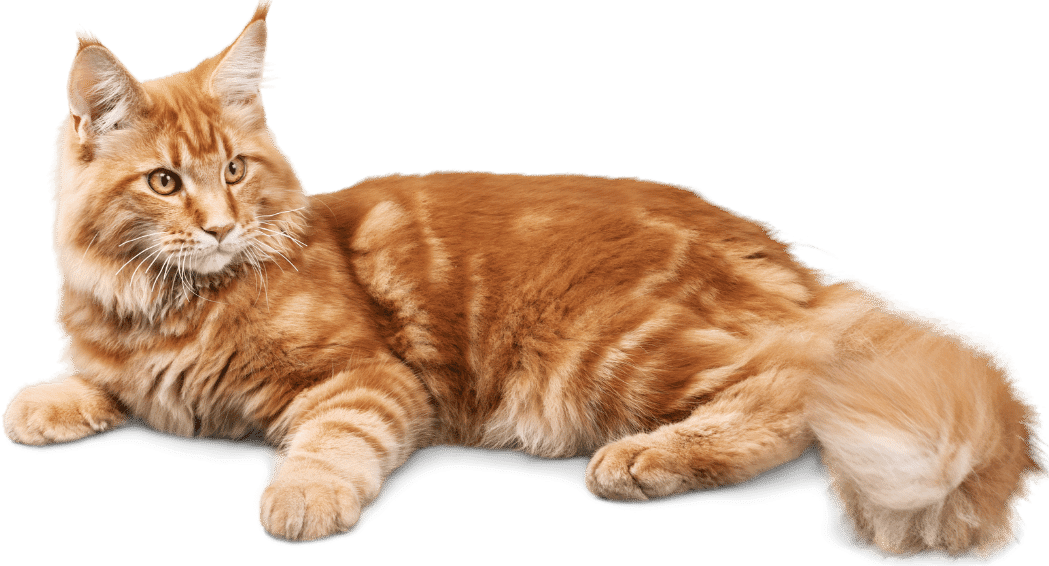Cats make wonderful companions with their unique personalities, affectionate natures, and playful antics. Choosing the right cat breed is essential for a harmonious home environment, as different breeds come with distinct characteristics and care requirements. Whether you’re a current cat owner looking to learn more about your feline friend or a prospective owner considering which breed to welcome into your home, this guide covers everything you need to know about the top 20 cat breeds.
Maine Coon Cat
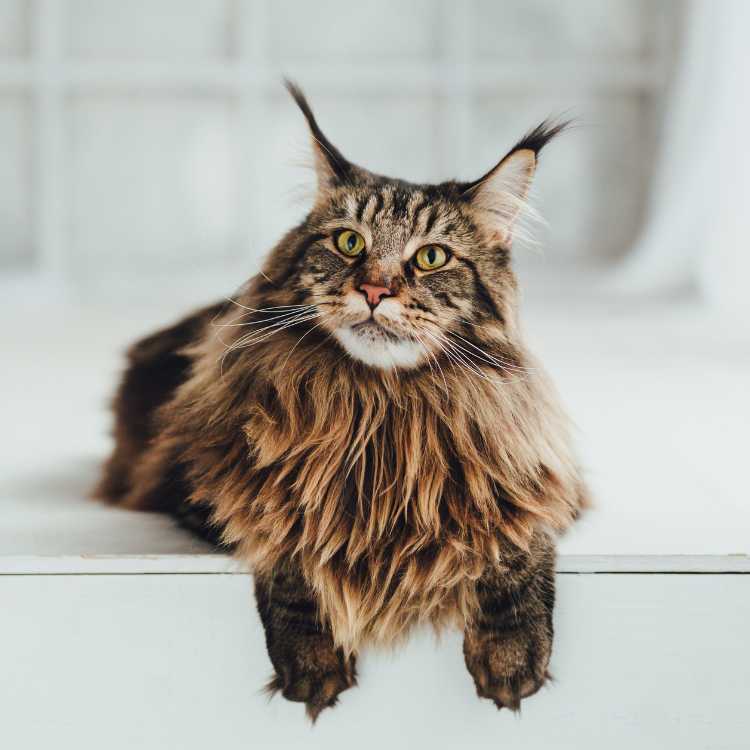
The Maine Coon is one of the largest domesticated cat breeds, known for its friendly and sociable nature. Originating in the United States, this breed has a rich history and is often referred to as “America’s cat.” Maine Coons are well-loved for their playful demeanor, intelligence, and ability to adapt to various environments. Their gentle disposition makes them excellent companions for families, and they are particularly good with children and other pets. Despite their size, they are quite agile and enjoy interactive play.
- Appearance: Long, thick fur; tufted ears; bushy tail.
- Personality: Affectionate, playful, and good with children and other pets. Often called “gentle giants” due to their size and temperament.
- Lifespan: 12-15 years.
- Color: Available in a variety of colors and patterns, including tabby, solid, and tortoiseshell.
- Weight: 10-25 pounds.
- Diet: High-protein diet with a mix of wet and dry food.
- Care Needs: Regular grooming is essential to manage their long fur and prevent matting. They are generally healthy but prone to certain genetic conditions.
Siamese Cat
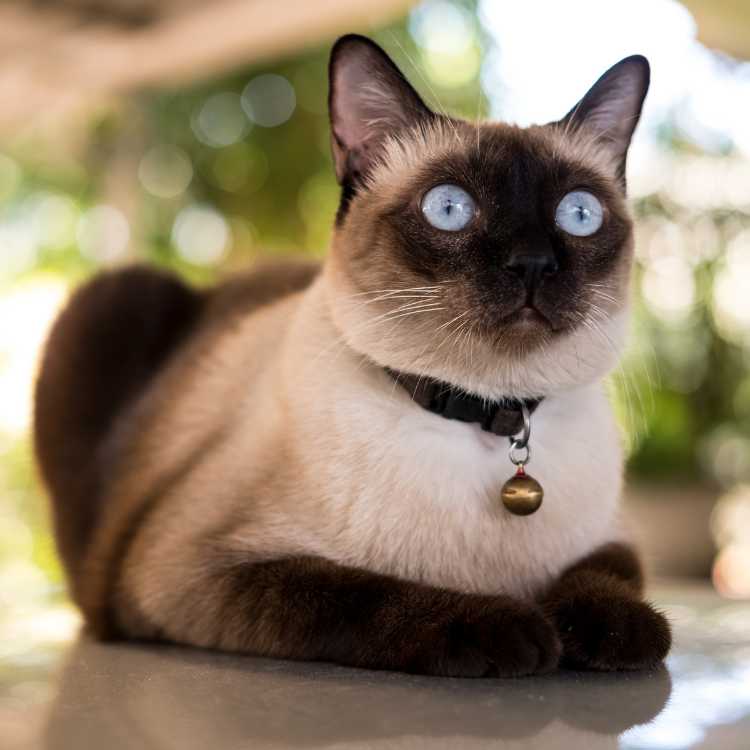
Siamese cats are known for their striking blue eyes, sleek bodies, and vocal nature. Originating from Thailand (formerly Siam), these cats have a regal and exotic appearance that has captivated cat lovers for centuries. Siamese cats are highly intelligent and curious, often forming strong bonds with their owners. They are very communicative and have a distinct, loud voice that they use to express their needs and feelings. This breed thrives on attention and interaction, making them great companions for those who enjoy an active and engaging pet.
- Appearance: Short, fine coat; almond-shaped blue eyes; slender, muscular build.
- Personality: Intelligent, curious, and social. They enjoy interacting with people and can be quite vocal.
- Lifespan: 10-15 years.
- Color: Seal point, blue point, chocolate point, lilac point.
- Weight: 8-15 pounds.
- Diet: Balanced diet with high protein content, both wet and dry food.
- Care Needs: Low grooming needs due to short coats; regular veterinary check-ups are recommended.
Persian Cat

Persian cats are famous for their long, luxurious coats and sweet, gentle personalities. This breed has a storied history, believed to have originated in Persia (modern-day Iran) and brought to Europe in the 1600s. Persians are known for their calm and affectionate nature, making them perfect lap cats. They enjoy a serene environment and are less active than some other breeds. Their placid demeanor makes them excellent companions for those looking for a more relaxed and loving pet. However, potential owners should be prepared for the high grooming demands of their beautiful coats.
- Appearance: Long, flowing coat; flat, round face; large, expressive eyes.
- Personality: Calm, affectionate, and good with children and other pets. They enjoy a quiet, stable environment.
- Lifespan: 12-16 years.
- Color: Wide range of colors and patterns.
- Weight: 7-12 pounds.
- Diet: Balanced diet with high-quality wet and dry food.
- Care Needs: Daily grooming is essential to prevent matting; regular eye and face cleaning is also necessary.
Ragdoll Cat
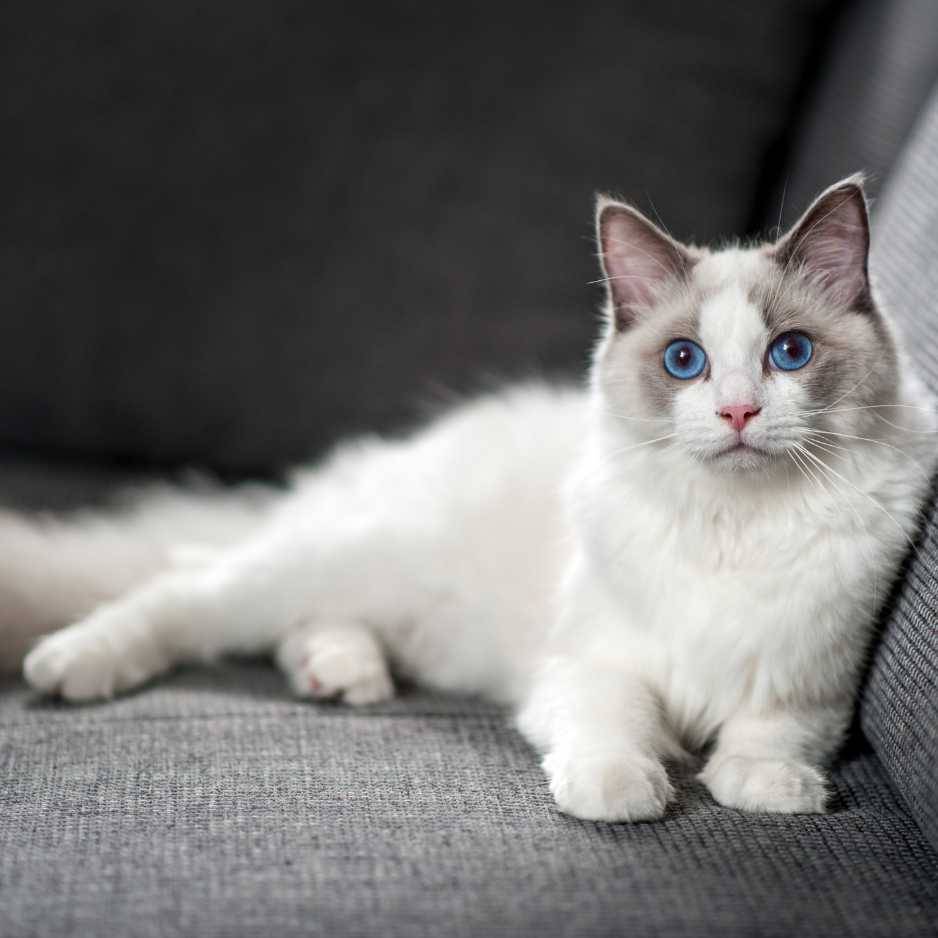
Ragdolls are large, affectionate cats known for their docile and laid-back nature. This breed was developed in the 1960s by Ann Baker, a breeder in California. Ragdolls get their name from their tendency to go limp when picked up, a trait that highlights their relaxed disposition. They are exceptionally gentle and good with children, making them ideal family pets. Ragdolls are also known for their striking blue eyes and colorpoint coat patterns, which add to their allure. Their easygoing temperament makes them well-suited to indoor living, where they can enjoy plenty of human interaction.
- Appearance: Semi-longhair coat; blue eyes; colorpoint patterns.
- Personality: Gentle, affectionate, and good with children and other pets. They are known for going limp when picked up, hence the name “Ragdoll.”
- Lifespan: 12-17 years.
- Color: Seal, blue, chocolate, and lilac color points.
- Weight: 10-20 pounds.
- Diet: High-protein diet with both wet and dry food.
- Care Needs: Regular grooming to prevent tangles and mats; regular veterinary check-ups are recommended.
British Shorthair Cat
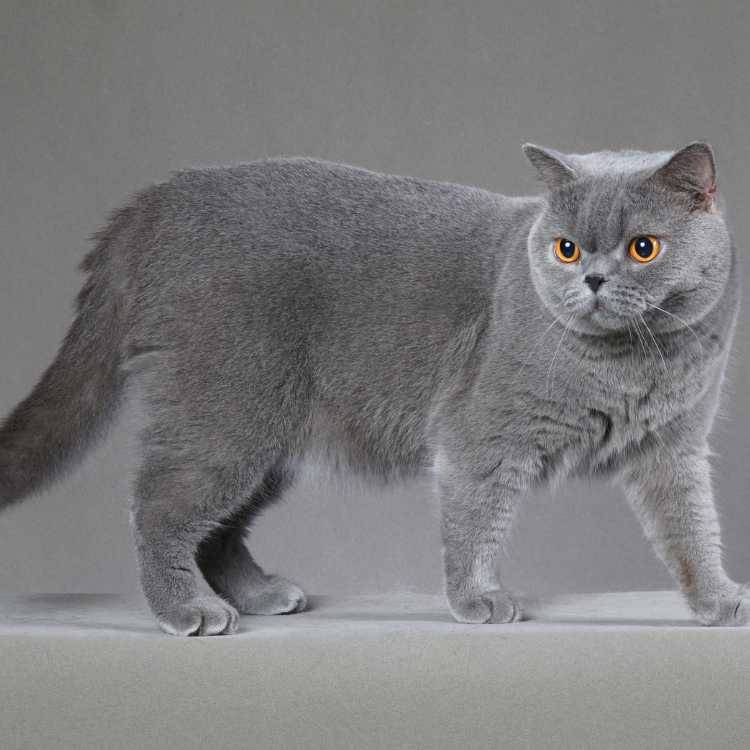
British Shorthairs are known for their round faces, dense coats, and easygoing nature. This breed is one of the oldest in England, with roots tracing back to the domestic cats of Rome. British Shorthairs are renowned for their robust health and low-maintenance care requirements. Their calm and friendly nature makes them ideal companions for families and singles alike. These cats are quite independent but enjoy spending time with their human companions. They adapt well to indoor living and are known for their loyalty and gentle disposition.
- Appearance: Short, dense coat; round face; large, round eyes.
- Personality: Calm, affectionate, and independent. They are good with children and other pets.
- Lifespan: 12-20 years.
- Color: Variety of colors and patterns, with blue (gray) being the most popular.
- Weight: 7-17 pounds.
- Diet: Balanced diet with high-quality wet and dry food.
- Care Needs: Low grooming needs; regular brushing to reduce shedding.
Bengal Cat

Bengal cats are known for their exotic, wild appearance and high energy levels. This breed was created by crossing domestic cats with Asian leopard cats, resulting in a stunningly beautiful and active pet. Bengals have a distinctive spotted or marbled coat that gives them a wild look, but they are entirely domestic in temperament. They are highly intelligent and require plenty of mental and physical stimulation. Bengals are great for active families or individuals who can provide them with the attention and exercise they need. Their social nature makes them excellent companions, but they may not be the best fit for households looking for a more relaxed pet.
- Appearance: Short, sleek coat with rosettes or spots; muscular build.
- Personality: Active, playful, and intelligent. They require lots of stimulation and exercise.
- Lifespan: 12-16 years.
- Color: Spotted or marbled patterns in various colors, including brown, snow, and silver.
- Weight: 8-15 pounds.
- Diet: High-protein diet with a mix of wet and dry food.
- Care Needs: Regular play and exercise; low grooming needs due to short coat.
Sphynx Cat
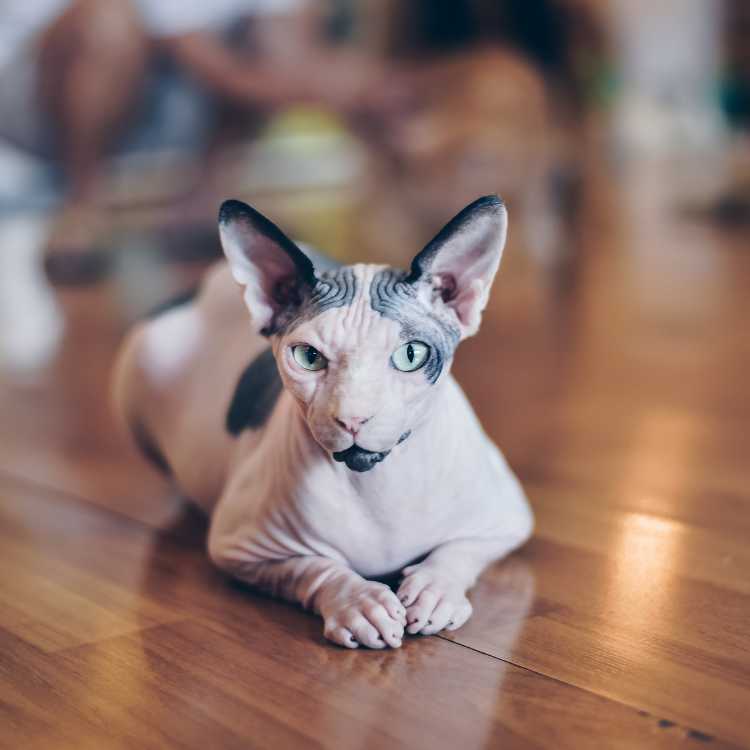
Sphynx cats are known for their hairless bodies and friendly, outgoing personalities. This breed was developed through selective breeding in the 1960s to produce a cat with little to no hair. Despite their lack of fur, Sphynx cats are known for their warm and soft skin, which has a suede-like texture. They are highly social and enjoy being the center of attention. Sphynx cats are playful and affectionate, making them great companions for those who want an interactive and loving pet. They do require regular bathing to remove the oils that would typically be absorbed by fur, and they need to be protected from extreme temperatures due to their lack of insulation.
- Appearance: Hairless with wrinkled skin; large ears; muscular build.
- Personality: Affectionate, playful, and social. They enjoy being the center of attention.
- Lifespan: 8-14 years.
- Color: Variety of skin colors and patterns.
- Weight: 6-12 pounds.
- Diet: High-quality, balanced diet with both wet and dry food.
- Care Needs: Regular bathing to remove skin oils; protection from extreme temperatures.
Abyssinian Cat
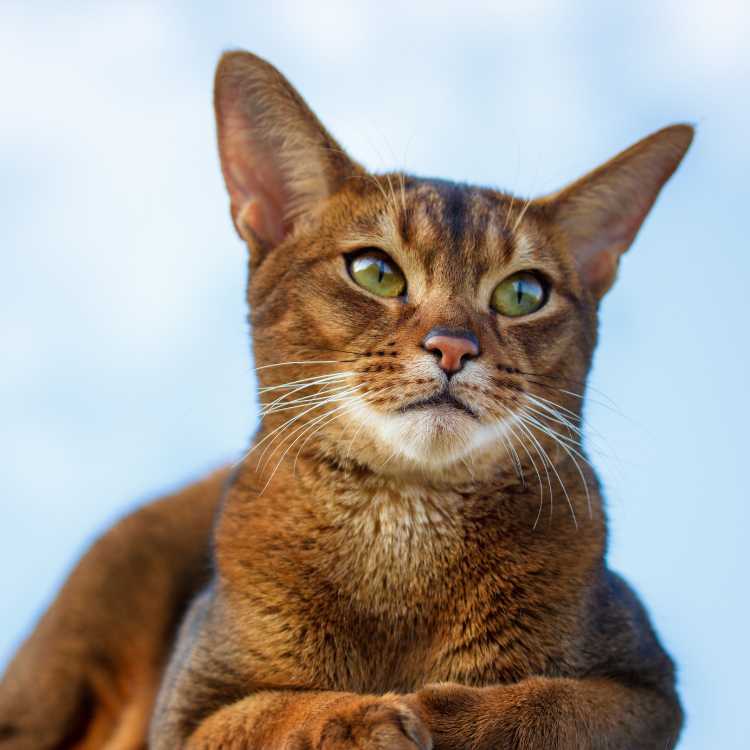
Abyssinians are known for their ticked coats and active, curious nature. One of the oldest known breeds, the Abyssinian’s origins are thought to be in Ethiopia (formerly Abyssinia), and they have been revered throughout history for their elegance and grace. These cats are highly active and playful, making them a joy to watch as they explore and interact with their environment. Abyssinians are incredibly curious and enjoy climbing and playing with toys that challenge their intelligence. Their sociable and affectionate nature makes them wonderful companions for families and singles alike.
- Appearance: Short, fine coat; muscular build; large, alert ears.
- Personality: Energetic, playful, and intelligent. They are curious and enjoy exploring their environment.
- Lifespan: 9-15 years.
- Color: Ruddy, red, blue, and fawn are common colors.
- Weight: 6-10 pounds.
- Diet: Balanced diet with high-quality wet and dry food.
- Care Needs: Low grooming needs; regular play and mental stimulation.
Birman Cat
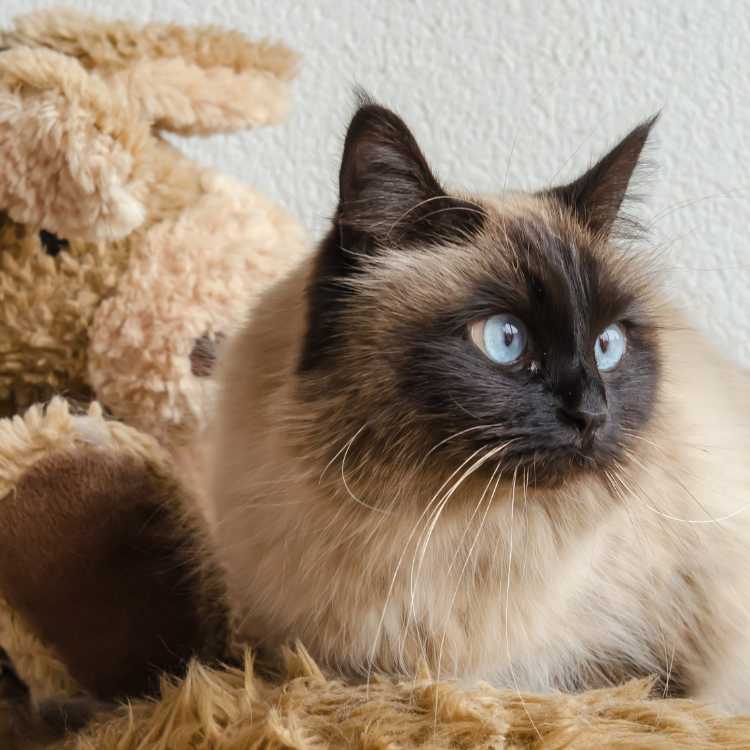
Birmans are known for their striking blue eyes, silky coats, and gentle, affectionate personalities. This breed has a mystical history, believed to have originated in Burma (modern-day Myanmar), where they were sacred temple cats. Birmans are highly social and enjoy the company of their human companions. They are known for their loving and gentle nature, making them excellent pets for families and singles alike. Birmans are also noted for their distinctive colorpoint pattern and white “gloves” on their paws, adding to their enchanting appearance.
- Appearance: Semi-longhair coat; blue eyes; colorpoint patterns with white paws.
- Personality: Gentle, affectionate, and good with children and other pets. They are social and enjoy human company.
- Lifespan: 12-16 years.
- Color: Seal, blue, chocolate, and lilac points with white gloves.
- Weight: 10-15 pounds.
- Diet: High-protein diet with both wet and dry food.
- Care Needs: Regular grooming to maintain their silky coat; regular veterinary check-ups are recommended.
Scottish Fold Cat
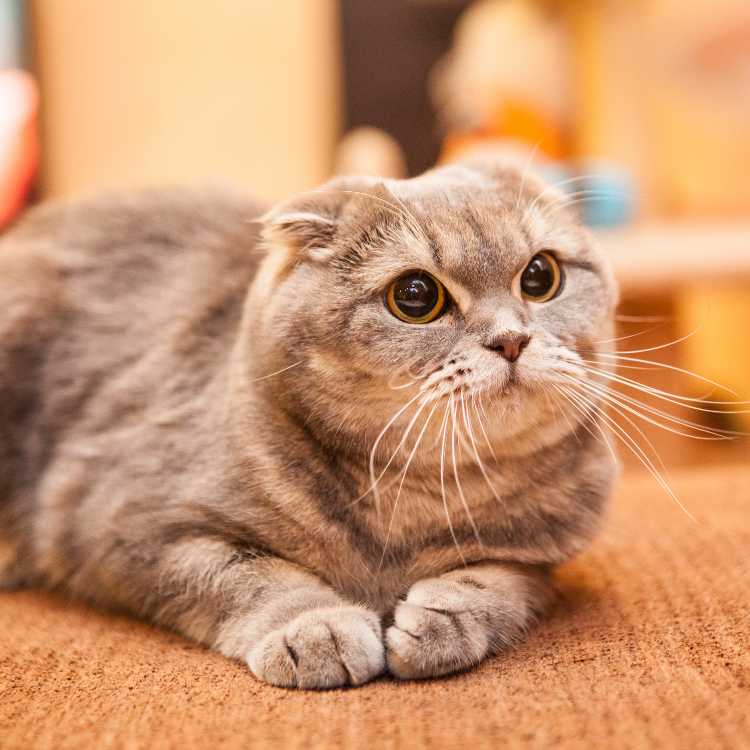
Scottish Folds are known for their distinctive folded ears and sweet, calm personalities. This breed originated in Scotland in the 1960s and has since become a beloved companion for cat enthusiasts worldwide. The unique ear fold is caused by a natural genetic mutation that gives them a distinctive look. Scottish Folds are known for their affectionate and easygoing nature, making them great pets for families and singles alike. They are playful but not overly active, enjoying both interactive play and quiet time with their human companions.
- Appearance: Short or long coat; folded ears; round face; large, round eyes.
- Personality: Calm, affectionate, and good with children and other pets. They enjoy a stable, quiet environment.
- Lifespan: 11-14 years.
- Color: Variety of colors and patterns.
- Weight: 6-13 pounds.
- Diet: Balanced diet with high-quality wet and dry food.
- Care Needs: Regular grooming for long-haired varieties; regular veterinary check-ups are recommended.
American Shorthair Cat

American Shorthairs are known for their robust health, easygoing nature, and classic good looks. This breed has a long history in the United States, with ancestors that arrived with early settlers. American Shorthairs are known for their adaptability and low-maintenance care needs, making them excellent pets for a variety of households. They are friendly and affectionate but also enjoy their independence. Their playful and curious nature makes them great companions for families and singles alike.
- Appearance: Short, dense coat; muscular build; a variety of colors and patterns.
- Personality: Friendly, affectionate, and good with children and other pets. They are adaptable and easygoing.
- Lifespan: 15-20 years.
- Color: Wide range of colors and patterns.
- Weight: 8-15 pounds.
- Diet: Balanced diet with high-quality wet and dry food.
- Care Needs: Low grooming needs; regular veterinary check-ups are recommended.
Burmese Cat
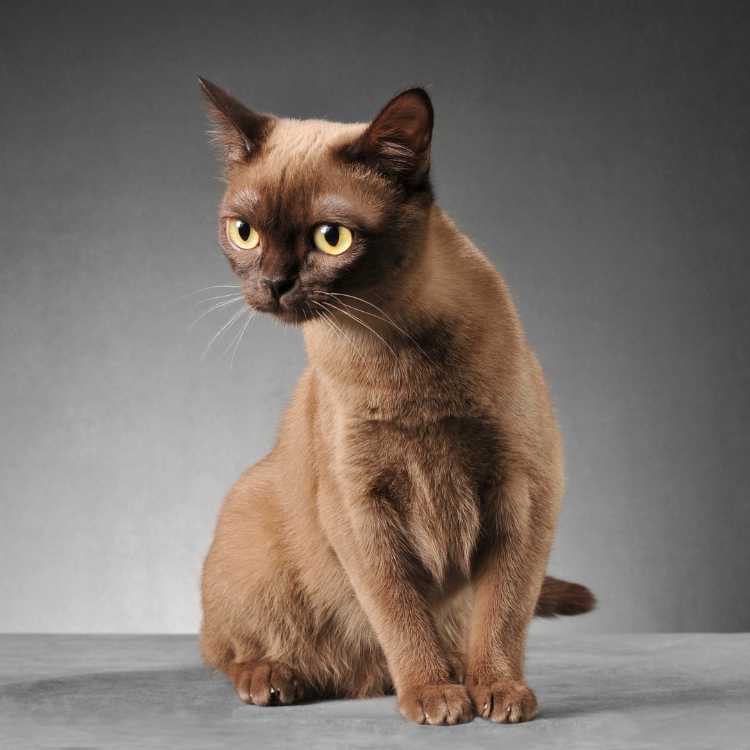
Burmese cats are known for their sleek, shiny coats and affectionate, playful personalities. This breed originated in Burma and was developed in the United States in the 1930s. Burmese cats are highly social and enjoy spending time with their human companions. They are known for their playful and curious nature, making them great pets for families and singles alike. Their sleek appearance and striking golden eyes add to their charm, making them a favorite among cat enthusiasts.
- Appearance: Short, shiny coat; muscular build; large, expressive eyes.
- Personality: Affectionate, playful, and social. They enjoy interacting with people and other pets.
- Lifespan: 10-17 years.
- Color: Sable, champagne, blue, and platinum.
- Weight: 8-12 pounds.
- Diet: High-protein diet with both wet and dry food.
- Care Needs: Low grooming needs; regular veterinary check-ups are recommended.
Russian Blue Cat
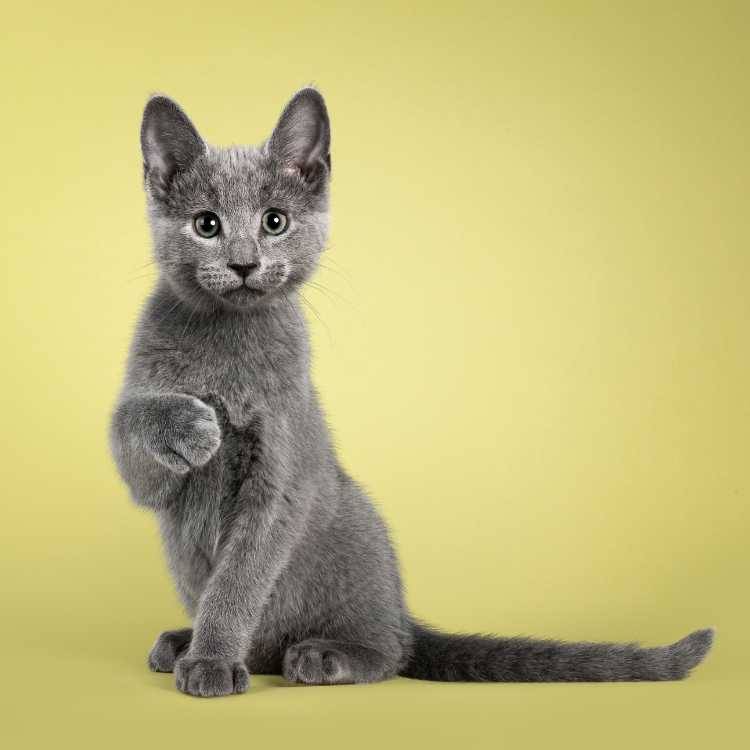
Russian Blue cats are known for their plush, bluish-gray coats and striking green eyes. This breed is believed to have originated in Russia and has been a favorite among cat lovers for its elegant appearance and gentle demeanor. Russian Blues are known for their quiet and reserved nature, making them excellent companions for those who prefer a more serene pet. They are loyal and affectionate with their human companions but may be shy around strangers. Their low-maintenance coat and robust health make them a popular choice for many households.
- Appearance: Short, dense coat; green eyes; slender, muscular build.
- Personality: Gentle, affectionate, and reserved. They are loyal to their families but may be shy around strangers.
- Lifespan: 15-20 years.
- Color: Bluish-gray.
- Weight: 7-15 pounds.
- Diet: Balanced diet with high-quality wet and dry food.
- Care Needs: Low grooming needs; regular veterinary check-ups are recommended.
Devon Rex Cat

Devon Rex cats are known for their curly coats, large ears, and playful, social personalities. This breed was discovered in England in the 1960s and has since gained popularity for its unique appearance and affectionate nature. Devon Rex cats are highly social and enjoy interacting with people and other pets. They are known for their playful antics and can often be found climbing, jumping, and exploring their surroundings. Their curly coat gives them a distinctive look, and their friendly nature makes them excellent companions for families and singles alike.
- Appearance: Curly, soft coat; large ears; slender, muscular build.
- Personality: Playful, affectionate, and social. They enjoy interacting with people and other pets.
- Lifespan: 9-15 years.
- Color: Variety of colors and patterns.
- Weight: 6-9 pounds.
- Diet: High-protein diet with a mix of wet and dry food.
- Care Needs: Regular grooming to maintain their curly coat; protection from extreme temperatures.
Oriental Cat
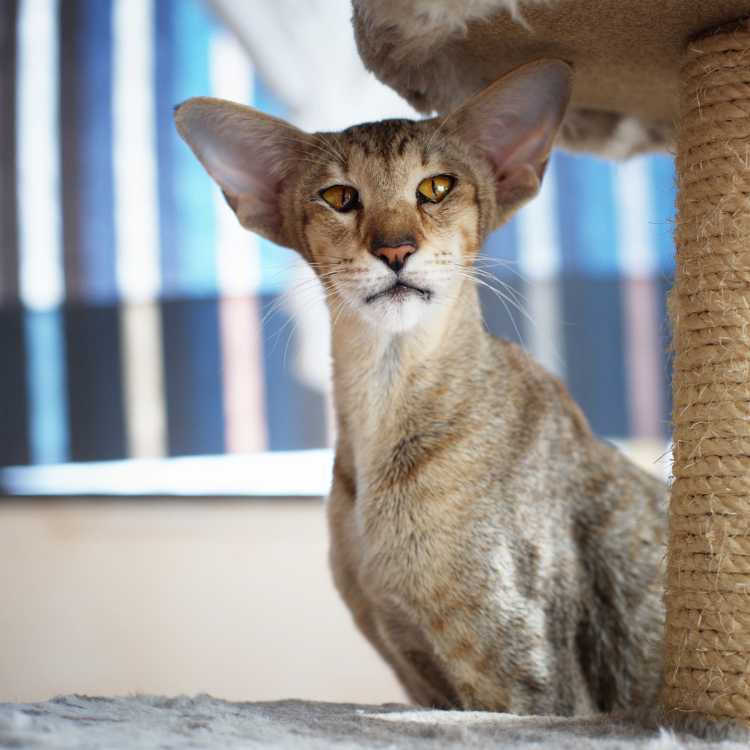
Orientals are known for their sleek bodies, large ears, and wide range of colors and patterns. This breed is closely related to the Siamese and shares many of the same characteristics, including their vocal nature and affectionate personalities. Orientals are highly intelligent and curious, often forming strong bonds with their owners. They enjoy interactive play and mental stimulation, making them great companions for active families or individuals. Their striking appearance and engaging personalities make them a favorite among cat enthusiasts.
- Appearance: Short, fine coat; large ears; slender, muscular build.
- Personality: Intelligent, curious, and social. They enjoy interacting with people and can be quite vocal.
- Lifespan: 12-15 years.
- Color: Wide range of colors and patterns.
- Weight: 6-12 pounds.
- Diet: High-protein diet with a mix of wet and dry food.
- Care Needs: Low grooming needs; regular veterinary check-ups are recommended.
Norwegian Forest Cat
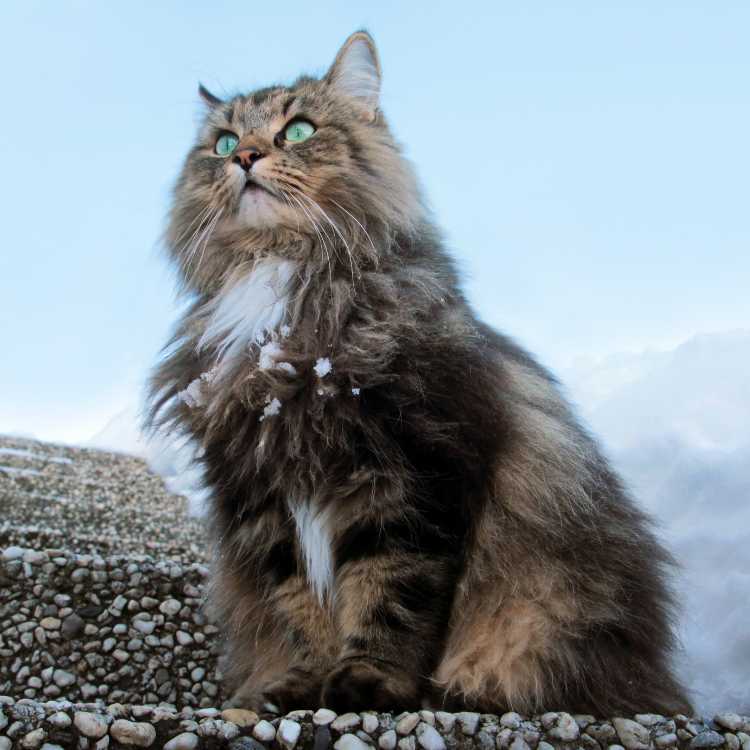
Norwegian Forest Cats are known for their thick, water-resistant coats and friendly, independent personalities. This breed has a long history in Norway, where they were valued for their hunting skills and hardiness. Norwegian Forest Cats are known for their adaptability and resilience, making them excellent pets for various environments. They are friendly and good with children and other pets but also enjoy their independence. Their thick coat requires regular grooming, but their robust health and easygoing nature make them a popular choice for many households.
- Appearance: Long, thick coat; tufted ears; bushy tail.
- Personality: Friendly, independent, and good with children and other pets. They are known for being adaptable and hardy.
- Lifespan: 12-16 years.
- Color: Variety of colors and patterns.
- Weight: 8-16 pounds.
- Diet: Balanced diet with high-quality wet and dry food.
- Care Needs: Regular grooming to prevent matting; regular veterinary check-ups are recommended.
Tonkinese Cat
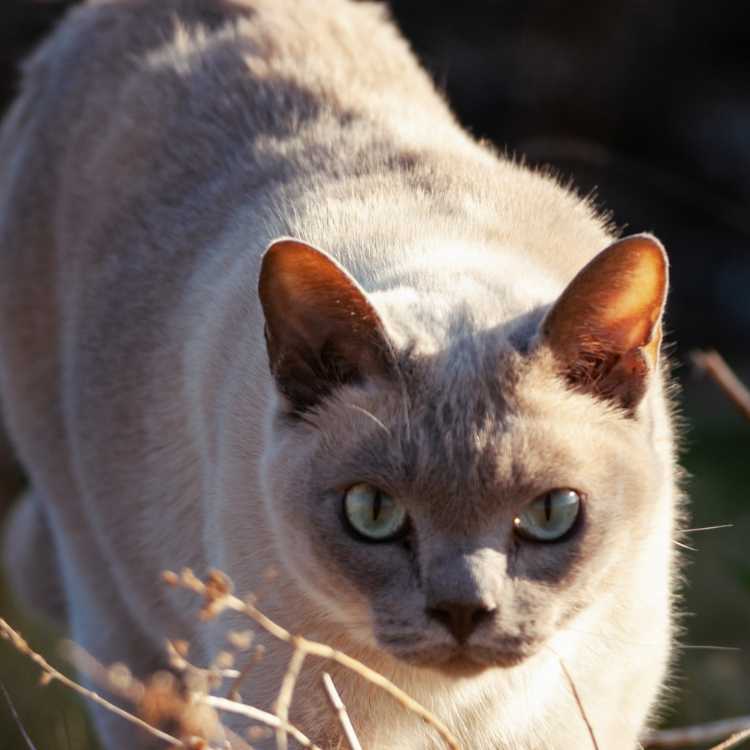
Tonkinese cats are known for their affectionate, playful personalities and striking appearance. This breed is a cross between Siamese and Burmese cats, combining the best traits of both. Tonkinese cats are highly social and enjoy interacting with their human companions. They are playful and curious, making them great pets for families and singles alike. Their striking blue or aqua eyes and sleek, silky coats add to their charm. Tonkinese cats thrive on attention and enjoy being involved in all aspects of family life.
- Appearance: Short, silky coat; blue or aqua eyes; muscular build.
- Personality: Playful, affectionate, and social. They enjoy interacting with people and other pets.
- Lifespan: 12-16 years.
- Color: Variety of colors and patterns.
- Weight: 6-12 pounds.
- Diet: High-protein diet with both wet and dry food.
- Care Needs: Low grooming needs; regular veterinary check-ups are recommended.
Turkish Van Cat
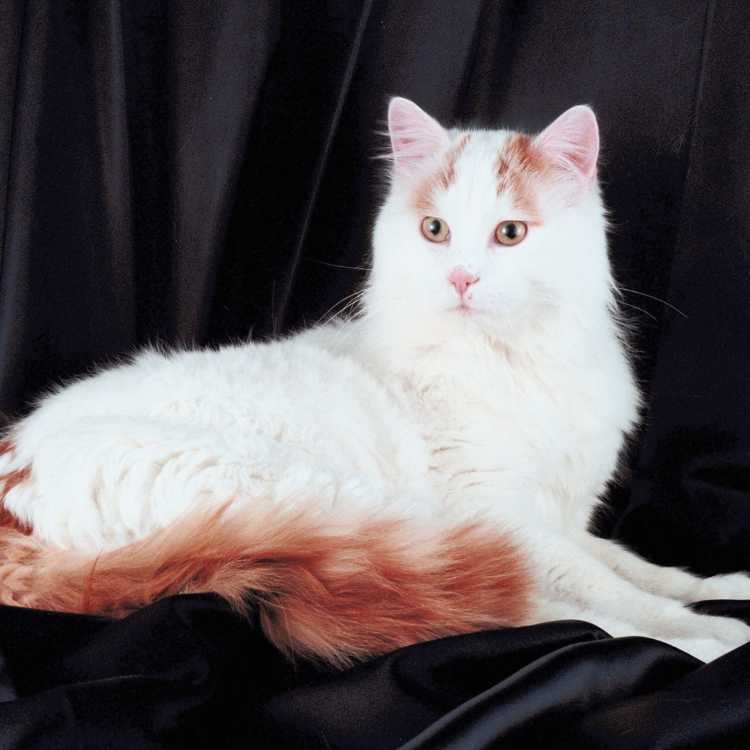
Turkish Vans are known for their love of water, striking appearance, and playful, active personalities. This breed originated in the Lake Van region of Turkey and has a unique affinity for water. Turkish Vans are highly active and enjoy interactive play, making them great companions for active families or individuals. They are affectionate and social but also enjoy their independence. Their distinctive color pattern, with a predominantly white body and colored head and tail, adds to their unique charm.
- Appearance: Semi-longhair coat; muscular build; distinctive color pattern.
- Personality: Playful, active, and affectionate. They enjoy water and interactive play.
- Lifespan: 12-17 years.
- Color: Predominantly white with color on the head and tail.
- Weight: 7-20 pounds.
- Diet: High-protein diet with a mix of wet and dry food.
- Care Needs: Regular grooming to maintain their coat; regular veterinary check-ups are recommended.
Burmese Cat
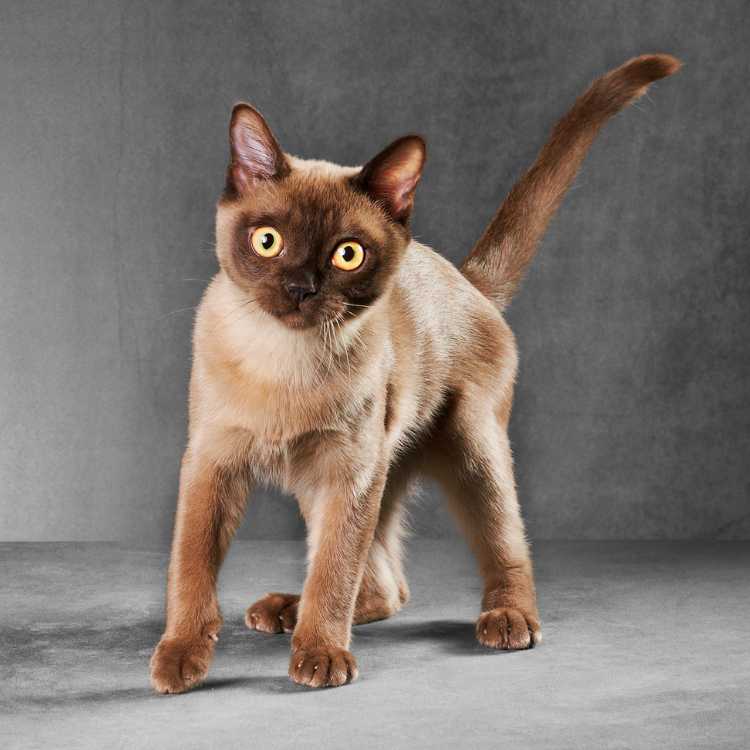
Burmese cats are known for their sleek, shiny coats and affectionate, playful personalities. This breed originated in Burma and was developed in the United States in the 1930s. Burmese cats are highly social and enjoy spending time with their human companions. They are known for their playful and curious nature, making them great pets for families and singles alike. Their sleek appearance and striking golden eyes add to their charm, making them a favorite among cat enthusiasts.
- Appearance: Short, shiny coat; muscular build; large, expressive eyes.
- Personality: Affectionate, playful, and social. They enjoy interacting with people and other pets.
- Lifespan: 10-17 years.
- Color: Sable, champagne, blue, and platinum.
- Weight: 8-12 pounds.
- Diet: High-protein diet with both wet and dry food.
- Care Needs: Low grooming needs; regular veterinary check-ups are recommended.
Ragamuffin Cat
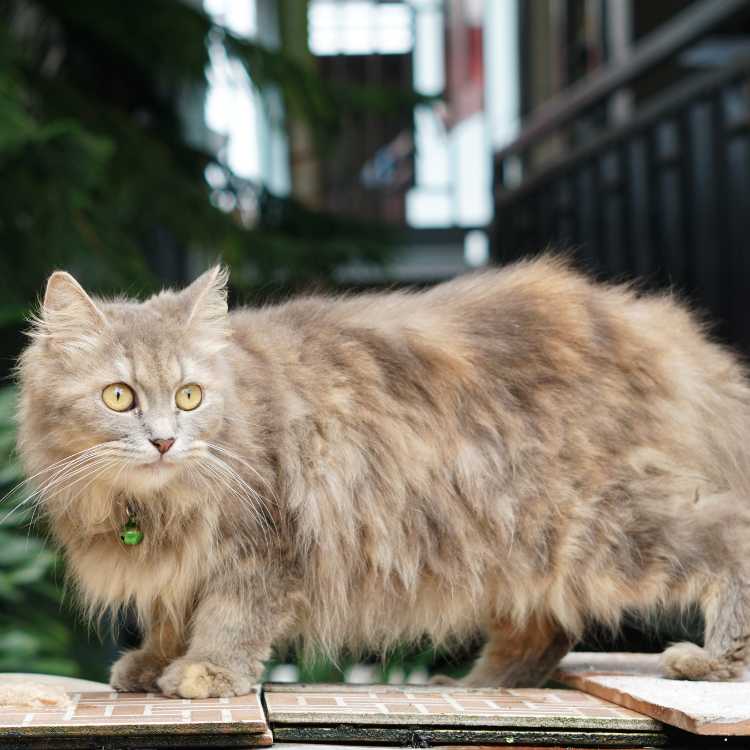
Ragamuffins are known for their plush, thick coats and affectionate, laid-back personalities. This breed is a variant of the Ragdoll, developed to have a greater variety of colors and patterns. Ragamuffins are highly social and enjoy the company of their human companions. They are known for their gentle and loving nature, making them excellent pets for families and singles alike. Their plush coats require regular grooming, but their sweet disposition and robust health make them a popular choice for many households.
- Appearance: Plush, thick coat; large, expressive eyes; muscular build.
- Personality: Affectionate, laid-back, and social. They enjoy interacting with people and other pets.
- Lifespan: 12-16 years.
- Color: Variety of colors and patterns.
- Weight: 10-20 pounds.
- Diet: High-protein diet with a mix of wet and dry food.
- Care Needs: Regular grooming to maintain their plush coat; regular veterinary check-ups are recommended.
Conclusion
Choosing the right cat breed for your home is a crucial decision that depends on your lifestyle, preferences, and the specific needs of each breed. Whether you prefer the playful nature of a Bengal, the calm demeanor of a Persian, or the affectionate personality of a Ragdoll, there’s a perfect cat breed out there for everyone. Understanding the unique characteristics and care requirements of each breed will help ensure a happy and harmonious relationship with your feline companion.
Frequently Asked Questions For Cats
What factors should I consider when choosing a cat breed?
When choosing a cat breed, consider factors such as your living environment, lifestyle, and any allergies you or family members might have. Some breeds require more grooming and maintenance, while others are more independent and low-maintenance. Additionally, consider the breed’s personality and whether it matches your family’s dynamics. For example, some breeds are more playful and social, making them great for families with children, while others may be more reserved and better suited for quieter households.
How do I know if a cat breed is good with children and other pets?
To determine if a cat breed is good with children and other pets, research the breed’s typical personality traits and behaviors. Breeds known for their affectionate, friendly, and tolerant nature, such as the Maine Coon, Ragdoll, and Birman, are generally good with children and other pets. It’s also essential to consider the individual cat’s temperament, as personality can vary within a breed. Introducing the cat to children and other pets gradually and under supervision can help ensure a smooth transition.
What are the grooming requirements for different cat breeds?
Grooming requirements vary widely among cat breeds. Long-haired breeds like the Maine Coon, Persian, and Ragdoll require regular brushing to prevent matting and tangles. Short-haired breeds like the Siamese, American Shorthair, and Russian Blue have lower grooming needs but still benefit from occasional brushing to reduce shedding and hairballs. Additionally, all cats need regular nail trimming, ear cleaning, and dental care to maintain overall health.
What diet is best for my cat?
A balanced diet that includes high-quality wet and dry food is best for most cats. The specific dietary needs may vary depending on the breed, age, activity level, and any health issues. High-protein diets are generally recommended, as cats are obligate carnivores. Consult with your veterinarian to determine the best diet for your cat’s specific needs. Fresh water should always be available, and treats should be given in moderation.
How can I ensure my cat stays healthy?
To ensure your cat stays healthy, provide regular veterinary care, including vaccinations, dental check-ups, and preventative treatments for parasites. Maintain a balanced diet and provide fresh water daily. Regular grooming and playtime are also essential for your cat’s physical and mental well-being. Monitor your cat for any signs of illness, such as changes in appetite, behavior, or litter box habits, and consult your veterinarian if you have any concerns. Creating a safe and stimulating environment will help keep your cat happy and healthy.


